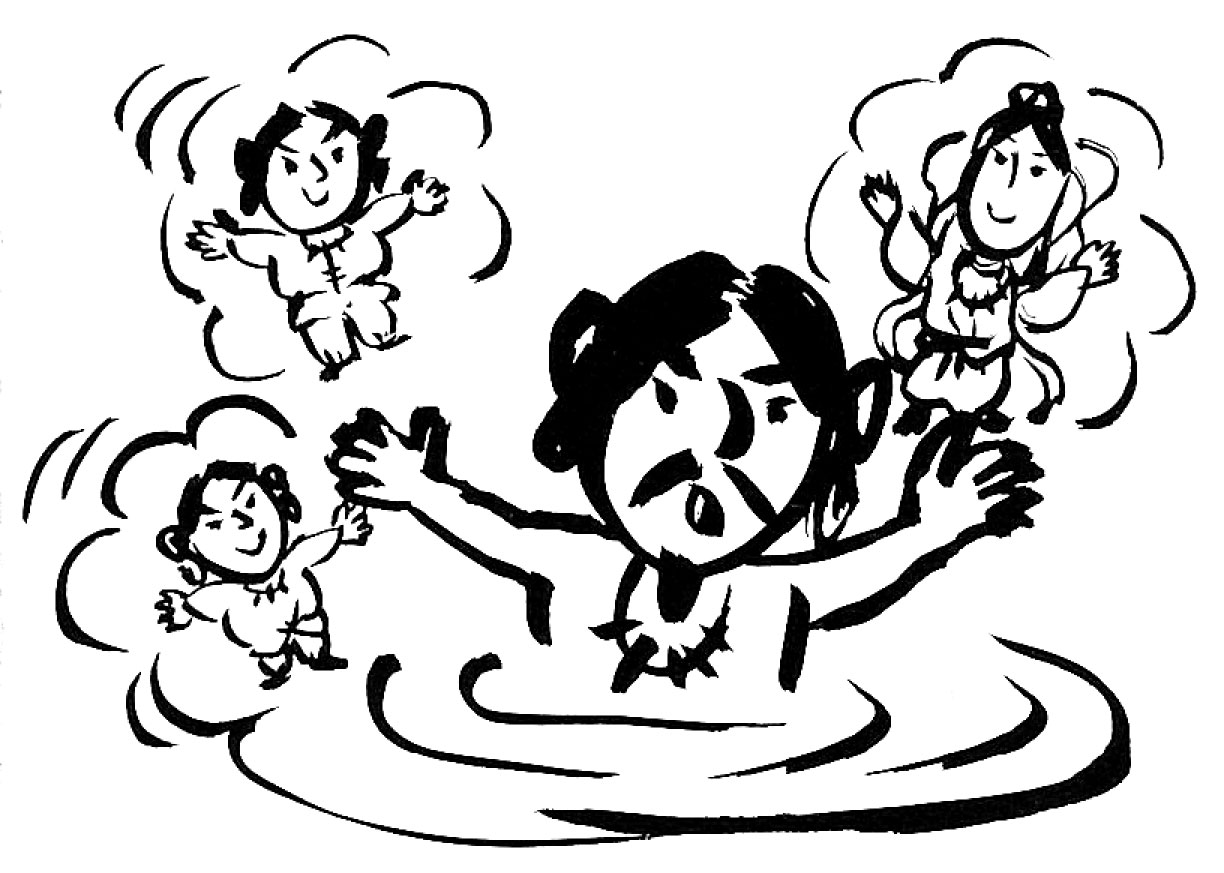The Myths of Japan: The Purification

Having returned to the realm of the living, Izanagi seeks to wash off the contamination of the netherworld. He strips off his clothes and cleanses his body by immersing himself in water. New deities spring forth from his discarded attire, and yet more are born as Izanagi washes himself. Finally, as he rubs his face, three of the most important gods in the Shinto pantheon come into being: Amaterasu, the sun goddess, is born from Izanagi’s left eye; the moon deity Tsukuyomi, lord of the night, from his right eye; and Susanoo, god of the sea and storms, from his nose. The birth of these deities concludes the creation myth.
In the Kojiki, the first written chronicle of Japan, the purification of Izanagi is described as having taken place in the province of Hyuga (present-day Miyazaki Prefecture). When scholars in the eighth century first compiled the myths of Japan in Nara, the capital at the time, they likely chose Hyuga as the scene because it was located far away facing the southeast and was therefore considered the place closest to the rising sun and, by extension, to the realm of the gods. This association with the sun is also seen in the name of the region: Hyuga was the only province in premodern Japan to include the character for “sun” in its name.

Purification remains a central ritual in Shinto, and is performed to cleanse mind and body before worship. At shrines, this is done by washing one’s hands and month at the entrance.
